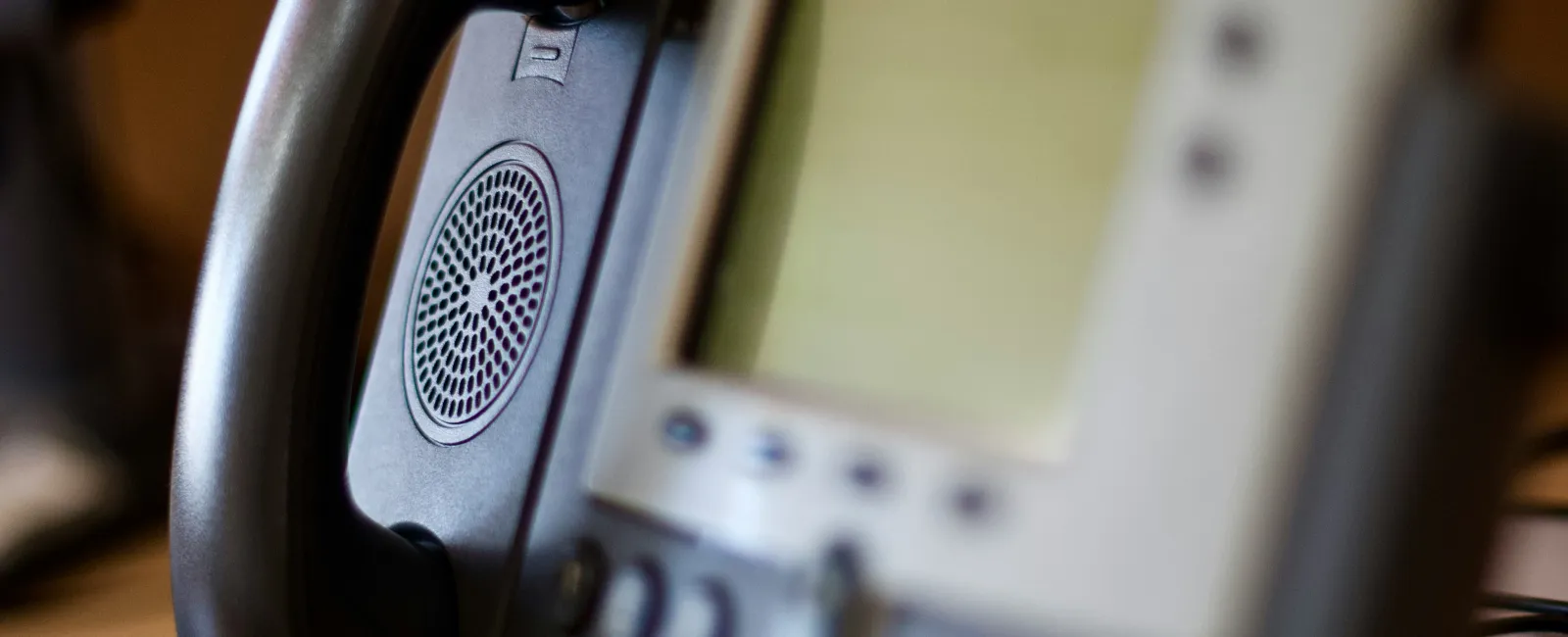The Overlooked Cybersecurity Gap
When most business leaders think about cybersecurity, they focus on computers, servers, and cloud applications. But one critical system often gets overlooked: the business phone system.
Today, most organizations rely on Voice over Internet Protocol (VoIP) systems. They're affordable, flexible, and perfect for remote or hybrid work. But because they run over the internet, they're also vulnerable to many of the same threats that target other IT systems.
In fact, unsecured VoIP systems are prime targets for cybercriminals. From eavesdropping to toll fraud, attackers can exploit phone vulnerabilities to steal data, disrupt operations, and even drain your budget.
It's time to look closely at the hidden VoIP security risks and how you can secure your communications.
The Evolution of Business Phone Systems
Traditional phone systems (PBX or Private Branch Exchange) once ran on closed, analog networks. Cybersecurity awareness wasn't a major concern because these systems weren't connected to the internet.
Fast forward to 2025: most small and mid-sized businesses have switched to VoIP systems. They offer powerful features like visual voicemail, video conferencing, call forwarding, and mobile apps. But convenience comes at a price: these systems are only as secure as the networks they run on.
That means if your IT infrastructure has a vulnerability.
Common VoIP Security Issues
Here are some of the most pressing business phone cybersecurity threats every SMB should know about:
1. Call Interception and Eavesdropping
Without encryption, voice data can be intercepted in transit. Hackers can listen in on calls, capturing sensitive business discussions or customer data.
2. Toll FraudAttackers exploit phone systems to make unauthorized international calls, leaving the business with enormous bills.
3. Denial of Service (DoS) Attacks
Hackers can overwhelm VoIP servers with traffic, knocking phone systems offline. For businesses that rely heavily on phones, even a few hours of downtime is costly.
4. Voicemail Hacking
Weak or default voicemail passwords make it easy for attackers to access messages, steal information, or impersonate employees.
5. Caller ID Spoofing
Cybercriminals disguise their numbers as trusted contacts, tricking employees into sharing information or credentials.
6. PBX Threats in Hybrid Systems
Businesses that still run legacy PBX systems alongside VoIP may leave unpatched entry points exposed.
Each of these risks has real financial and reputational consequences
Why SMBs Are Especially Vulnerable
Large corporations often have dedicated IT and telecom teams to secure communication systems. Small and mid-sized businesses, on the other hand, may not realize that their phone systems need the same level of protection as their email and servers.
Attackers know this. That's why SMBs are vulnerable targets for PBX threats and VoIP fraud. And because phone downtime directly impacts customer service and sales, even short disruptions can cause lasting harm.
How VoIP Attacks Affect Your Business
The damage from phone-related cyberattacks goes beyond technical disruption:
- Financial Losses: Toll fraud can rack up thousands in charges overnight.
- Reputation Damage: Customers who can't reach your business lose trust quickly.
- Compliance Risks: For regulated industries like healthcare or government, intercepted calls may lead to serious data privacy violations.
- Operational Downtime: A DoS attack on your phone system can halt communication across your organization.
In short, ignoring business phone cybersecurity leaves both your wallet and your reputation exposed.
Your VoIP Security System: Best Practices
The good news: with the right measures, VoIP systems can be just as secure as traditional IT systems. Here's a VoIP security best practices checklist to strengthen your secure communication systems:
1. Encrypt All Calls and Data
Ensure your VoIP provider supports end-to-end encryption. This prevents eavesdropping and data theft during calls.
2. Require Strong Authentication
- Change all default usernames and passwords.
- Enforce strong, unique credentials for phone system access.
- Use multi-factor authentication for administrative accounts.
3. Update and Patch Regularly
- Keep VoIP servers, phones, and apps up to date.
- Apply firmware updates for IP desk phones.
- Retire unsupported PBX or hybrid systems.
4. Segment Network Traffic
Separate VoIP traffic from general internet traffic using VLANs (Virtual Local Area Networks). This reduces the chance of an attack spreading from one system to another. It also helps making sure your voice traffic has priority.
5. Monitor for Unusual Activity
Set up alerts for:
- Unusual call patterns (e.g., spikes in international calls).
- Multiple failed login attempts.
- Unexpected voicemail access.
6. Educate Employees
Employee and staff cybersecurity training to recognize spoofed calls and secure voicemail practices. Encourage them to report suspicious phone activity quickly.
7. Work With a Trusted IT Partner
Many SMBs lack the in-house expertise for a fully safe VoIP implementation systems. A managed IT provider can deliver proactive monitoring, configuration, and support tailored to your industry. They also should understand your internal network which will work to your advantage in troubleshooting issues. When you use your ISP for the phone system, they don't understand all the pieces on the network and how it can effect your call quality and your security.
Check Your Provider is VoIP Secure
Not all providers prioritize voice over internet protocol security equally. When evaluating current tech vendors, ask:
- Do they provide end-to-end call encryption?
- How do they handle patching and updates?
- What security certifications or compliance standards do they meet?
- Can they integrate with existing cybersecurity tools?
- Do they offer 24/7 support in case of outages or attacks?
Choosing the right provider can make the difference between secure communications and ongoing risk.
Example of Why You Need a Secure VoIP System
Consider a small healthcare provider that relies on VoIP for scheduling and patient communication. Attackers launched a DoS attack against their phone system, leaving patients unable to reach the office for several days. The provider not only lost revenue but also faced complaints about patient safety and HIPAA compliance.
This example underscores why securing communication systems is about more than convenience; it's about protecting your business and your customers.
Don't Overlook Your Secure Voice in Cybersecurity Planning
VoIP systems are here to stay. They're cost-effective, flexible, and essential for modern business operations. But without proper safeguards, they also create vulnerabilities that attackers are eager to exploit.
By understanding VoIP security threats, guarding against PBX threats, and implementing best practices for secure communication systems, SMBs can enjoy the benefits of modern phone systems without compromising security.
Your phones are more than just tools for conversation. They're part of your IT infrastructure. Treat them with the same attention and protection as the rest of your technology.
Concerned about the security of your business phone system? Schedule a free technology risk assessment with Tomorrow's Technology Today. We'll evaluate your VoIP setup, identify vulnerabilities, and help you implement solutions that keep your communications safe.
Click Here or give us a call at 419-678-2083 to Book a FREE 10-Minute Discovery Call




